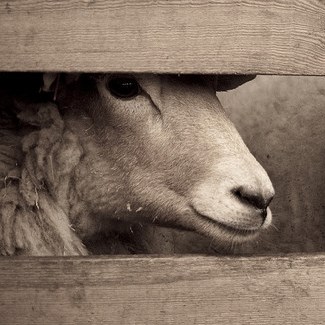THE ABIDING LIFE
Vision and The Little Prince
By Gwen Sellers

Have you ever read The Little Prince by Antoine de Saint-Exupéry? It was part of the content in a French class years ago and beloved by my sister, but I did not recall the story. So when its illustrations came to mind recently, I was prompted to read it. And I'm glad I did. Literarily, it is no wonder this book is a classic. The imagery and social commentary are at once sobering and beautiful. Personally, what I am most struck by is the concept of vision. The narrator puts at odds grown-ups and children. Grown-ups think they understand what is important about life, but they don't. Grown-ups think they are in touch with reality, but children see what is really going on. Children are willing to dream, to explore, and to look beyond themselves whereas grown-ups are consumed with making themselves feel important. As a young boy, the narrator found himself discouraged by grown-ups who urged him to more practical studies, which he admits were useful. But he ended up with no one to relate to. He might happen upon someone who seemed able to understand his heart, only to discover they did not. So he acted like a "sensible man" concerned with "matters of consequence." He describes it as living life alone. Then he crashes an airplane in the desert and meets the Little Prince, a visitor from another planet. The Little Prince has been on quite the journey, learning various truths about life. He reminds the narrator of what is truly important about life. He revives the narrator's ability to dream.
Perhaps the most touching segment for me in my recent reading of the story is that of the drawing of the sheep. You see, the narrator's dreams were first crushed in drawing. Having just learned about boa constrictor digestion, he drew a picture of a boa constrictor with an elephant in its stomach and suggested that it would be frightening. However, the picture simply looked like a hat because he left the boa constrictor's skin on. So he drew a picture in which one could see the elephant inside, to which the adults responded that he could make better use of his time. His ambitions squelched, the narrator studied acceptable areas and became a pilot. However, even as an adult, he used his first drawing to test whether people would understand him. They didn't. That is, until the narrator crashed in the desert and met the Little Prince. Upon meeting the narrator, the Little Prince requests a drawing of a sheep. The narrator gives him the hat-like drawing of the boa constrictor; and the Little Prince immediately knows what it is. Persuaded by the Little Prince, the narrator attempts various sheep, each of which the Little Prince refuses for some reason or another. Until the narrator draws a box. The sheep is inside the box, and can be whatever the Little Prince wants it to be. Very clever from an adult perspective in so far as how to satisfy a child, but that is not the point. The point is that the box allows room for the vision of the Little Prince. He is able to get to know the sheep inside the box. It can be a living and changing creature. Likely a metaphorical stretch, but this image prompted me to think about my own heart. I wonder if I have too long been looking to others to draw me a sheep that I like instead of getting to know the sheep inside the box. Let me explain.
It is all too easy for me to want a formula for life. Something that I can either perform well or not, but at least a clear target. If it's supposed to be a sheep, I want it to look like one. I don't think God works that way. He knows the dreams He has put in our hearts; and He wants to teach us to tend them and develop them, just like the Little Prince must learn to care for his sheep. The dream might not be so recognizable to others, or at times even to us. What I see as a boa constrictor digesting an elephant might look like a hat to most. What I see as a sheep safe in his home for the night might look like a two-dimensional box to others. But it doesn't look that way to God. In fact, He sees the true picture much more fully than I.
Continue to Page Two
Image Credit: publicenergy; Creative Commons
Published on 3-24-2014
